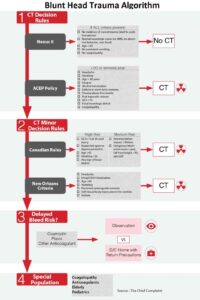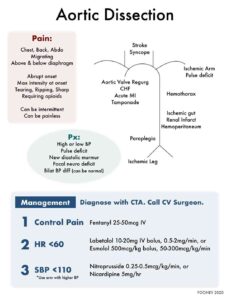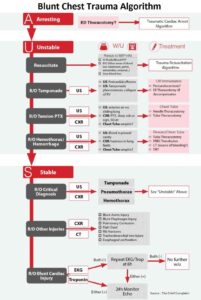In 2005, the American Heart Association (AHA) guidelines for cardiopulmonary resuscitation and emergency cardiovascular care introduced therapeutic hypothermia to the post–return of spontaneous circulation (ROSC) algorithm in comatose patients. This was a major difference from the 2000 advanced cardiovascular life support (ACLS) guidelines, which clearly stated that hypothermia should not be induced after resuscitation from cardiac arrest (though they did acknowledge a potential benefit in patients who spontaneously developed mild hypothermia > 33°C).
The changes were prompted by two trials published in the year 2002 that clearly showed favorable neurologic outcomes in patients cooled to hypothermic levels, compared with normothermic patients, after ROSC.
In the first study, Bernard et al. randomized 77 eligible patients (comatose survivors of out-of-hospital cardiac arrest) to treatment with hypothermia versus normothermia. Target core temperatures were 33°C and 37°C, respectively. The patients randomized to the hypothermia group were brought to goal temperature within 2 hours of ROSC, were maintained at target core temperature for 12 hours, and were then actively rewarmed to normothermia. At hospital discharge, 49% of the patients in the hypothermia group were considered to have a good neurologic outcome (discharged to home or rehabilitation facility), compared to only 26% in the normothermia group.
In the second study, the authors (the Hypothermia after Cardiac Arrest [HACA] study group) randomized patients who had been resuscitated after cardiac arrest due to an initial rhythm of ventricular fibrillation (VF) to undergo either therapeutic hypothermia or standard care with normothermia, with target temperatures of 32°C to 34°C and 37°C, respectively. Hypothermia was maintained for 24 hours, and patients were then rewarmed passively over 8 hours. At 6 months, 55% percent of the hypothermia group had a favorable neurologic outcome, defined by cerebral performance category (CPC) score of 1 or 2 on a five-point scale, compared to 39% in the normothermia group. In addition, the 6-month mortality in the hypothermia group was 14% lower than it was in the normothermia group.
Despite a number of complications associated with hypothermia in the aforementioned trials, including coagulopathy, arrhythmia, hyperglycemia, and sepsis, the AHA guidelines adopted induced therapeutic hypothermia. The 2010 AHA guidelines recommended cooling of comatose adult patients with ROSC after out-of-hospital cardiac arrest due to pulseless ventricular tachycardia (VT)/VF to 32°C to 34°C for 12 to 24 hours (class 1, LOE B) and to consider hypothermia for most other comatose adult patients with ROSC after cardiac arrest regardless of initial rhythm (class IIb, LOE B).
In 2013, a large, well-performed trial was published that compared neurologic outcomes of patients after being randomized to two target temperatures. Nielsen et al. randomized 939 comatose adult patients with ROSC after out-of-hospital cardiac arrest from any rhythm to a target temperature of 33°C or 36°C. After 28 hours at target temperature, both groups were gradually rewarmed to 37°C, and between 36 and 72 hours, hyperthermia (>37.5°C) was aggressively avoided using fever control measures. At follow-up after 180 days, there were no significant differences between the two groups with respect to the composite outcome of death or poor neurologic function measured by the CPC or modified Rankin scale score.
From the results of the above-mentioned study, it seems that inducing hypothermia does not offer an advantage. However, preventing fever in these patients might pose a clinical benefit with regard to long-term neurologic outcome.
Up until recently, the AHA guidelines recommend cooling to 32°C to 34°C, with the support from the two landmark trials and several other studies that showed improved neurologic outcome for comatose survivors of VF cardiac arrest. In the 2015 updates, based on the most recent literature, the AHA strongly recommends that all comatose patients with ROSC should have temperatures maintained between 32°C and 36°C for at least 24 hours, after which fever should be actively prevented. The nomenclature of induced hypothermia has been changed to “targeted temperature management” or TTM.
Targeted temperature management should be initiated as soon as possible in the emergency department in the appropriate post-ROSC patient. It should also be noted that prehospital initiation of hypothermia using cold intravenous fluids is no longer recommended in the most current guidelines. There is no optimal cooling method; however, current therapies include using cold saline, cooling blankets, and frequent application of ice packs. Available methods may be institution dependent. Core temperature should be continuously monitored using an esophageal thermometer, bladder catheter, or pulmonary arterial catheter if needed. After cooling (at which point the patient would typically be in the intensive care unit), fever should be avoided.
Key Points
- Two landmark trials in 2002 showed neurologic benefit from therapeutic hypothermia.
- The AHA adopted induced therapeutic hypothermia in 2005.
- A large trial in 2013 showed no difference in neurologic outcome between targeted temperatures of 33°C and 36°C.
- The most recent AHA updates recommend targeted temperature management between 32°C and 36°C for 24 hours post ROSC.
- Fever should be avoided as a part of targeted temperature management.
- Prehospital initiation of cold intravenous fluids is no longer advised.



